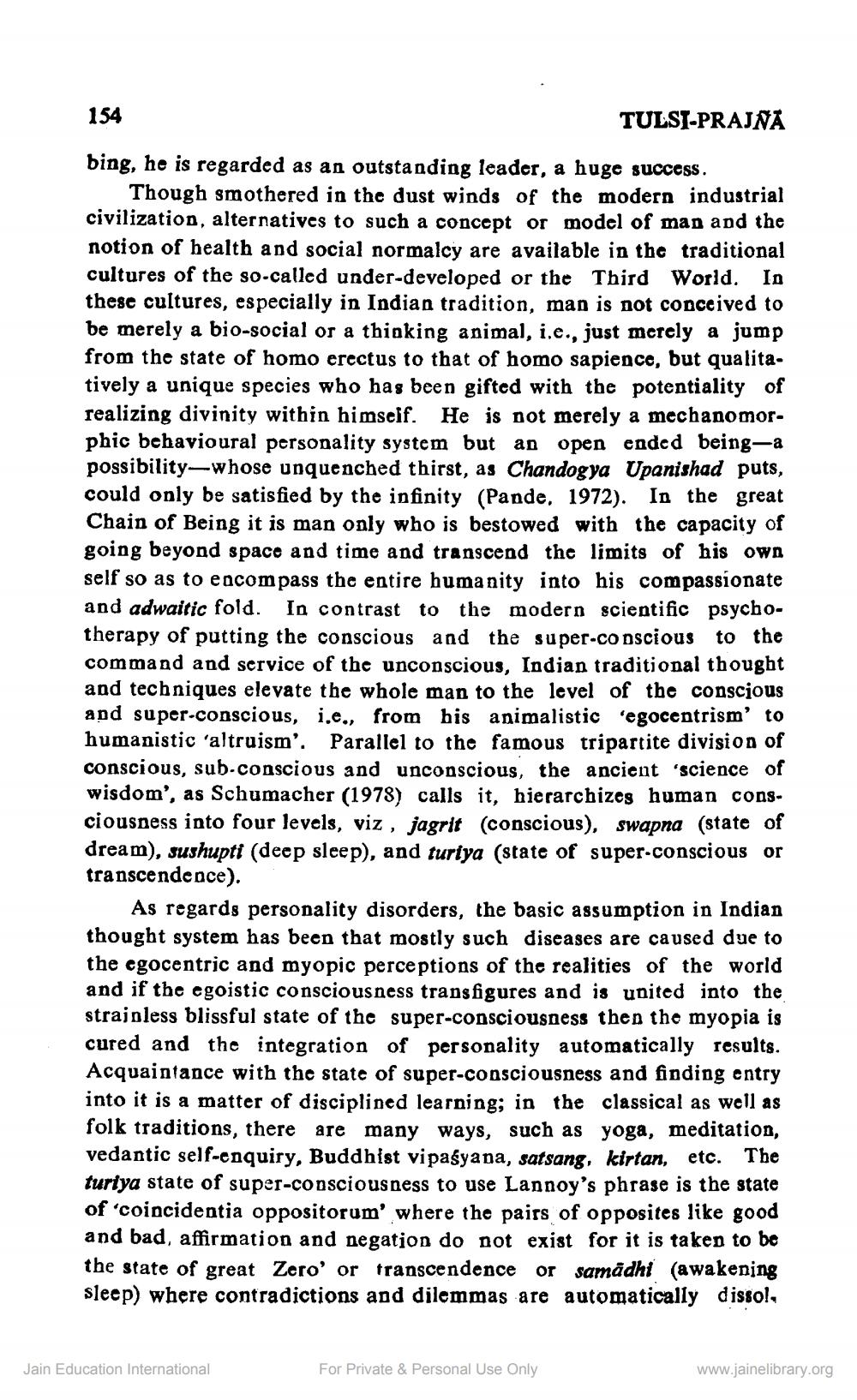________________
154
bing, he is regarded as an outstanding leader, a huge success.
Though smothered in the dust winds of the modern industrial civilization, alternatives to such a concept or model of man and the notion of health and social normalcy are available in the traditional cultures of the so-called under-developed or the Third World. In these cultures, especially in Indian tradition, man is not conceived to be merely a bio-social or a thinking animal, i.e., just merely a jump from the state of homo erectus to that of homo sapience, but qualitatively a unique species who has been gifted with the potentiality of realizing divinity within himself. He is not merely a mechanomorphic behavioural personality system but an open ended being-a possibility-whose unquenched thirst, as Chandogya Upanishad puts, could only be satisfied by the infinity (Pande. 1972). In the great Chain of Being it is man only who is bestowed with the capacity of going beyond space and time and transcend the limits of his own self so as to encompass the entire humanity into his compassionate and adwaitic fold. In contrast to the modern scientific psychotherapy of putting the conscious and the super-conscious to the command and service of the unconscious, Indian traditional thought and techniques elevate the whole man to the level of the conscious and super-conscious, i.e., from his animalistic egocentrism' to humanistic 'altruism'. Parallel to the famous tripartite division of conscious, sub-conscious and unconscious, the ancient 'science of wisdom', as Schumacher (1978) calls it, hierarchizes human consciousness into four levels, viz, jagrit (conscious), swapna (state of dream), sushupti (deep sleep), and turiya (state of super-conscious or transcendence).
As regards personality disorders, the basic assumption in Indian thought system has been that mostly such diseases are caused due to the egocentric and myopic perceptions of the realities of the world and if the egoistic consciousness transfigures and is united into the strainless blissful state of the super-consciousness then the myopia is cured and the integration of personality automatically results. Acquaintance with the state of super-consciousness and finding entry into it is a matter of disciplined learning; in the classical as well as folk traditions, there are many ways, such as yoga, meditation, vedantic self-enquiry, Buddhist vipasyana, satsang, kirtan, etc. The turiya state of super-consciousness to use Lannoy's phrase is the state of 'coincidentia oppositorum' where the pairs of opposites like good and bad, affirmation and negation do not exist for it is taken to be the state of great Zero' or transcendence or samadhi (awakening sleep) where contradictions and dilemmas are automatically dissol,
Jain Education International
TULSI-PRAJNĀ
For Private & Personal Use Only
www.jainelibrary.org




